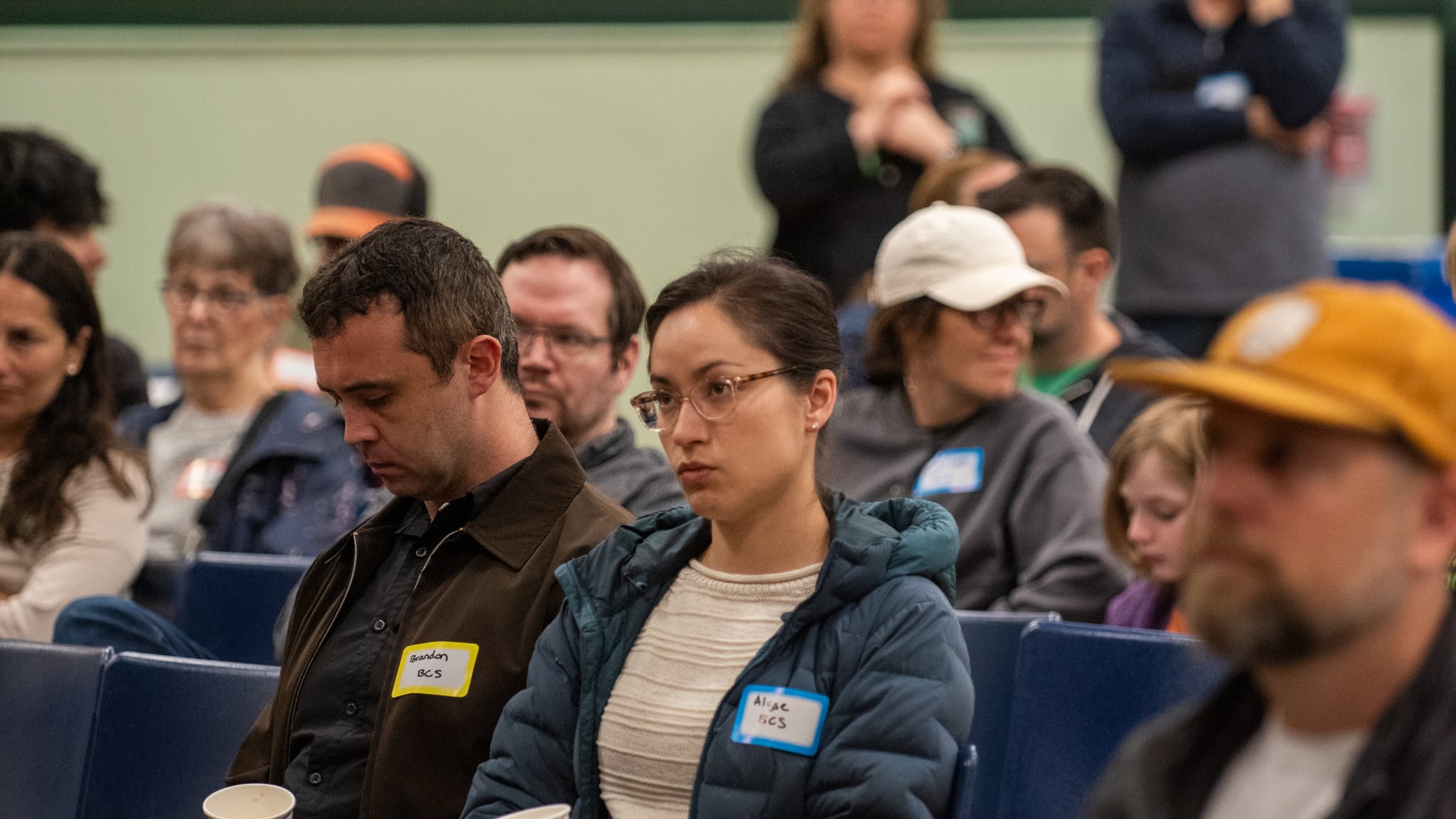Parent advocates seeking seismic upgrades at Portland Public Schools say the district’s latest strategy doesn’t sufficiently prioritize stabilizing the schools at greatest danger of collapsing in an earthquake.
Those parents, organized in the coalition Safe Structures PPS, voiced those concerns at a Portland School Board facilities and operations subcommittee meeting on Oct. 8. They say the district’s latest updates on seismic retrofits deviate from a resolution the previous School Board passed in May. Resolution 7109 called for money in the bond to be prioritized toward mitigating seismic deficiencies, particularly “at the 8–10 schools assessed to pose the greatest risk of injury or death in a significant seismic event.”
That resolution was passed following significant pressure from parents, whose advocacy was key to the May passage of a $1.83 billion property tax bond.
A first glimpse at how PPS will determine which schools to prioritize came to members of the School Board at that Wednesday meeting, alongside a general timeline for when district leaders expect to start making seismic upgrades. Advocates for Safe Structures PPS expressed alarm at the presentation, and have urged the district to allocate its limited resources toward decisions that would save the most lives.
“We are cognizant of how many significant challenges PPS management must balance at the moment,” says Per Olstad, a Beverly Cleary School parent and leader with Safe Structures PPS. “Nevertheless, we are concerned that Office of School Modernization staff appear to be prioritizing seismic projects in a manner that disregards the explicit directive in Resolution 7109 to prioritize funding toward the riskiest schools.”
The major issue several parent advocates have with the presentation at Wednesday’s meeting comes from a slide labeled “Seismic Priority Formula Sample.” The formula sample weighs seismic risk at 35%, facility condition at 20%, right-sizing at 20%, Title I and Comprehensive Support and Improvement status at 15%, and grade level at 10%. (Grade level, district leaders explained at the meeting, prioritizes buildings with younger students who might be less apt at protecting themselves during a quake.)
There was little explanation of how the district had come up with the formula sample, or any elaboration on how it would work in practice. District spokespeople did not respond to a request for comment from WW asking for more details, though it does not appear finalized. The sample formula echoes what district officials have made clear for months: The seismic conversation cannot be isolated from several other concerns the district faces, including school closures.
“This is what we have come up with to date. This is just to give you an idea of some of the factors we are looking at when it comes to determining what sites will be prioritized,” Robert Jole, a senior project manager at the Office of School Modernization, said at the meeting. “We are trying to get this pinned down so we can provide a recommendation to the board and leadership toward the end of the month.”
Still, that seismic risk made up only 35% of the formula concerned parent advocate John Dwyer, who also works with Safe Structures and has two kids at Beverly Cleary. Part of his concern comes because a summer report by Holmes Consulting Group, which PPS commissioned, identified and prioritized school projects based on seismic risk scores, and assigned several PPS buildings scores above 9 on a 1–10 scale. He said that because those numbers are so close together, when weighed with other factors, they may become easily outweighed by other factors the district is considering.
“The bond passed in part because voters trusted funds would go to seismic safety based on actual risk,” Dwyer said at the meeting. “My kids and thousands of others are depending on you to get this right.”
The district is looking to finalize its prioritization formula by the end of the month, Jole says, which will be key as it determines which buildings it might want to fully retrofit (the state could award some grant funds for full retrofits, and the district wants to start preparing applications next month.) A presentation slide outlining November actions shows those also include using the formula to establish school priority and beginning community engagement sessions.
The School Board has previously indicated its interest that PPS take a hybrid approach to addressing seismic deficiencies, both by tackling full building retrofits to maximize grants and upgrading parts of buildings to spread benefits as widely as possible. In the meeting, Jole said full building retrofits could realistically start in summer 2027, but noted the district was exploring some partial upgrades it could undertake in summer 2026. Roofing projects at a number of schools could also fold in some seismic improvements, Jole said.
But parents with Safe Structures say those plans also deviate from the resolution. The district should not be spending money meant for its riskiest buildings on “low-hanging fruit” projects, Olstad says.
Under the terms of Resolution 7109, PPS management may seek board approval for another strategy for tackling seismic upgrades that does not prioritize the riskiest eight to 10 schools “upon a written showing of impracticality, demonstrable need, or reasonable evidence that alternate expenditures of funds are necessary for the health and safety of PPS students and staff,” it reads. No such conversation has come before the board so far.
“PPS has a troubling history of treating prior bond funding for seismic projects as simply another pool of money to complete projects it was already contemplating, regardless of seismic risk,” Olstad says. “The resolution calls on PPS to take a fundamentally different approach—one that prioritizes the riskiest schools and saves the most children’s lives in the event of an earthquake.”

